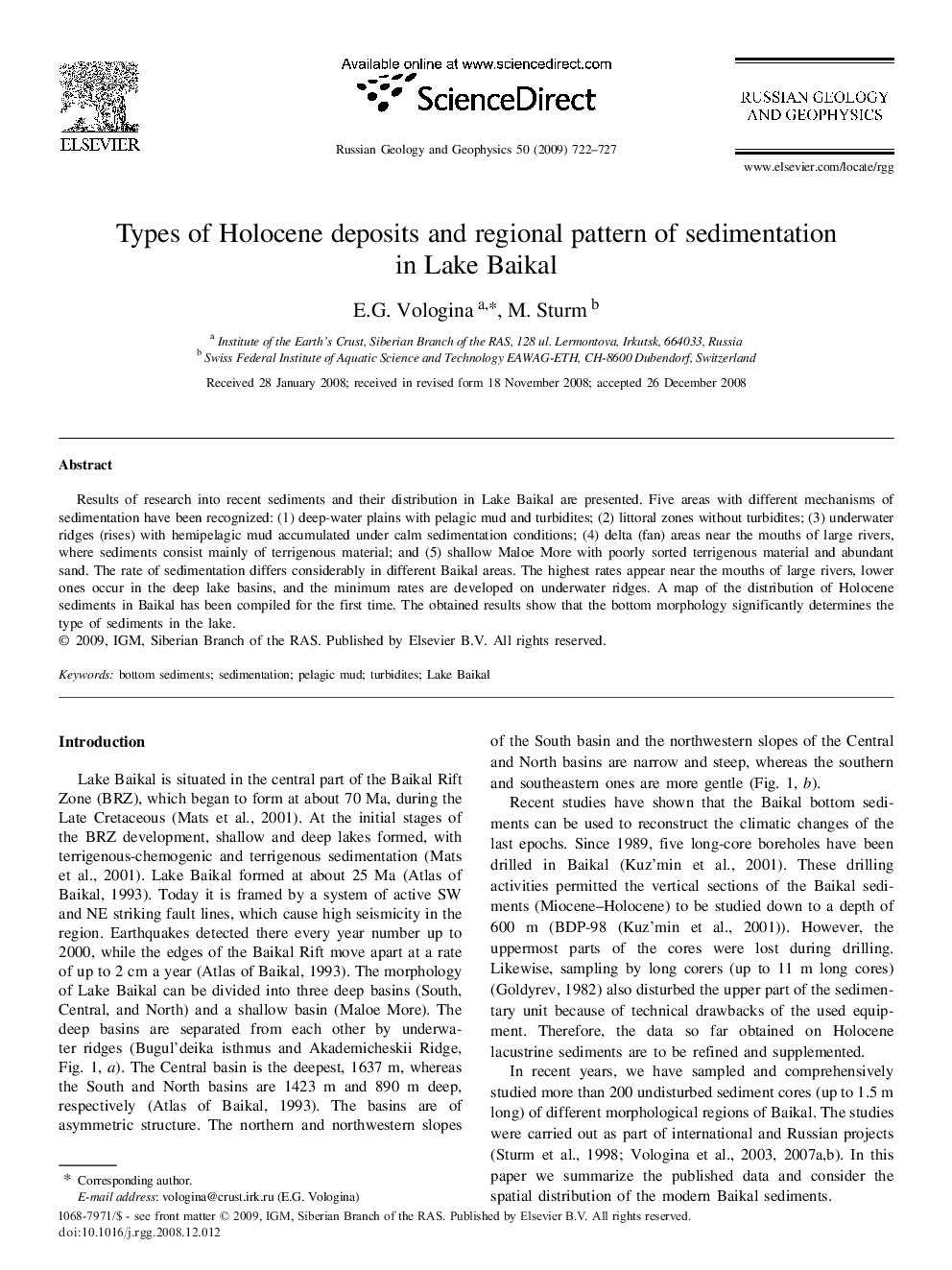| Article ID | Journal | Published Year | Pages | File Type |
|---|---|---|---|---|
| 4738748 | Russian Geology and Geophysics | 2009 | 6 Pages |
Results of research into recent sediments and their distribution in Lake Baikal are presented. Five areas with different mechanisms of sedimentation have been recognized: (1) deep-water plains with pelagic mud and turbidites; (2) littoral zones without turbidites; (3) underwater ridges (rises) with hemipelagic mud accumulated under calm sedimentation conditions; (4) delta (fan) areas near the mouths of large rivers, where sediments consist mainly of terrigenous material; and (5) shallow Maloe More with poorly sorted terrigenous material and abundant sand. The rate of sedimentation differs considerably in different Baikal areas. The highest rates appear near the mouths of large rivers, lower ones occur in the deep lake basins, and the minimum rates are developed on underwater ridges. A map of the distribution of Holocene sediments in Baikal has been compiled for the first time. The obtained results show that the bottom morphology significantly determines the type of sediments in the lake.
